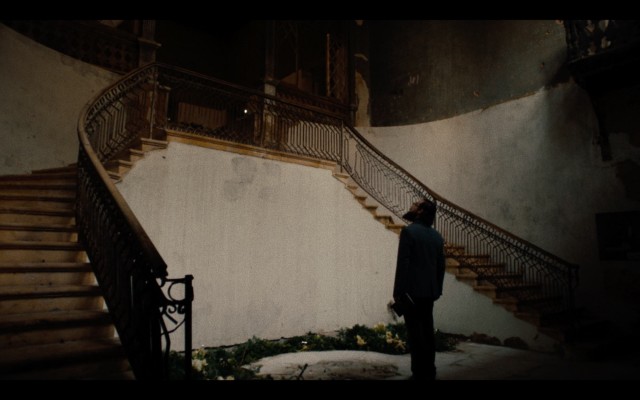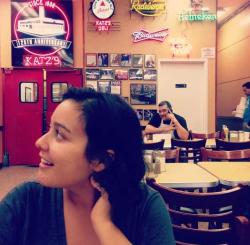When Mohamad Hafez left Syria for the US to study to be an architect, he could not fathom what he was about to leave behind. With a single-entry visa, he would never be able to go back to his homeland and to his family. In A Broken House, director Jimmy Goldblum explores Hafez’s feeling of hiraeth (a homesickness for a home to which you cannot return, or never was) with great sensitivity and an aesthetic that perfectly complements his art – creating detailed miniatures of the Damascus landscape he’d left behind.
It was while working on a previous, less personal, project that Goldblum first discovered Mohamad Hafez’s story. Upon meeting him, Goldblum couldn’t help but see many similarities between their personalities and interests, the only real difference being that Hafez was born in Syria. Separated from his family, he found himself stricken with homesickness, so as a way of dealing with this longing for a place, and its people, he started recreating the streets of Damascus in mini sculptures. It was “art therapy that he didn’t know was art therapy”, as the director puts it. With Goldblum unable to document Hafez’s life for that original project, producer Matt Weaver found the support they needed in former Congressman and House Majority leader Dick Gephardt who empowered the filmmakers to bring Hafez’s story to the screen with full creative control.
“I had noticed a recent trend in immigration films”
An artist portrait and a story about immigration, war and displacement, A Broken House covers topics that are rather conventional in the documentary field, yet Goldblum’s approach makes the film stand out from both perspectives. “I had noticed a recent trend in immigration films”, the director explains as we discuss the aims for his short, “documentarians were increasingly relying on graphic violence as a way to build empathy for the victims of conflict”. Very aware of the tropes, Goldblum shows the emotional toll of being away from one’s family, culture and homeland by connecting Hafez to his art and it’s an approach that certainly pays off. Following Hafez’s story this way makes for an engaging and emotional watch, but just as important, A Broken House doesn’t feel like just another artist portrait or tale of immigration.

“My DP Oliver Millar and I knew from the outset that we were going to film A Broken House on Super 16 film” – Goldblum on the aesthetic of his film
With Hafez’s striking authenticity and vulnerability in front of the camera, Goldblum paints a deeply moving picture of a man who has to deal with a feeling of disconnect from his family and his culture, while also having to witness the destruction of the streets he grew up on, powerless and thousands of miles away. Anyone who has left their home country behind will almost certainly be able to identify with parts of Hafez’s story. However, even without this element of relatability, it’s undeniably refreshing to see an immigration story that is not centered around violent images but instead aims to empathetically capture exactly what it feels like to leave your homeland under such distressing circumstances.
“Mohamad’s art is layered with dust, dirt, paint – physical material – and we wanted to honor the physicality of his process by shooting on an analog format”, Goldblum shares with us as we discuss the visual flair of the film. Adding that as the art Hafez creates is deeply rooted in nostalgia, he felt that film would create an aesthetic to complement that, while also putting viewers “into his subjective headspace”. In addition to the emotional authenticity and subtlety of the film, DP Oliver Millar’s images create a striking bridge between Hafez’s art and his life story, allowing the audience to appreciate his work and the emotional nuances of his experience.
A Broken House had an impressive festival run with notable stops at Hot Docs, Aspen ShortsFest and Palm Springs ShortFest. With it now available online through the New Yorker and POV, Goldblum is switching gears with his next project as he starts to work on his narrative feature debut, an adaptation of Sarah Elaine Smith’s novel Marilou Is Everywhere.

 Céline Roustan
Céline Roustan